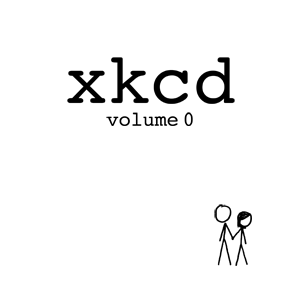The Latest from Boing Boing |  |
- Two Good Reasons To Always Read the Methods Section of a Scientific Paper
- How to run, meditate, and not get hurt
- New Yorker art editor Francoise Mouly talks about cover illustration for Money issue
- Transformer-and-crossbones tees
- Super Mario cupcakes
- What's wrong with Search Engine Optimization
- Media centers: the exciting, the boring; the solved, the unsolved
- Europeans! Call your MEP today to block net surveillance proposal!
- Gag order blocks Guardian from reporting on Parliament
- Copyright vs. folk music
- Digging through baby poo in the name of science
- Farms as skyscrapers
- Zombie Street Fashion
- Phillip Roebuck: One Man Band Banjo Ninja
- Fireplace named world's most beautiful object
- Photos of uncomfortable chairs
- Beauty and Brazil
- Stunningly strange cloud
- Boing Boing guest blogger: Connie Choe!
- Gallery of NASA's early spacecraft models
- Invasion of the giant blobs of "sea mucus"
- Tone Balls -- dust bunnies that collect in guitar bodies
- xkcd: volume 0
| Two Good Reasons To Always Read the Methods Section of a Scientific Paper Posted: 13 Oct 2009 04:44 AM PDT Sure, you could skip straight to "Conclusions" and get your soundbite. But if you make a habit of avoiding "Methods and Materials" you will miss out on some classic moments of science humor---both intentional and otherwise.  Do you know how hard it is to find Flickr shots of people reading journal articles? We'll settle for cute, instead. From KOMUnews via CC In my summer reading, I came across two excellent examples... 1) Chicken Soup for the Scientist's Soul (And Lunch) The funny part? They included the actual chicken soup recipe used in the study under "Methods and Materials". Actual quote from the paper: Traditional chicken soup was prepared according to a family recipe, which will be referred to as "Grandma's soup" (C. Fleischer; personal communication; 1970). I haven't tried it yet, but I'm planning on making a batch sometime this fall. The paper says the recipe is "very highly regarded locally" (a claim they back up with a citation). 2) Weekend at Bernie's Apparently, it works best if you kill the female flies. Rather than engaging in insect bondage, the Methods section clarified that the team had gassed female flies to death, propped them up so they appeared alive and interested in sex, and tricked the male flies into necrophilia. And you thought being detail-oriented was boring. |
| How to run, meditate, and not get hurt Posted: 13 Oct 2009 04:28 AM PDT  It's a brisk Saturday afternoon in San Francisco, and I'm standing outside of Sports Basement with a metronome in my hand. Several hundred feet away, a guy in a funny hat is running around the empty parking lot at a consistent 85 steps per minute. His upper body angles forward as his legs cycle backwards to the beat... beep beep beep. It looks kind of ridiculous, but the guy is actually demonstrating an innovative exercise regime that combines the concepts of Tai Chi and mindfulness meditation with athletic techniques used by Kenyan Olympic sprinters. It's called Chi Running, and it's directly related to recent debates around natural vs power running and the case against heavy-duty sneakers. Most conventional athletic coaches and sports apparel companies advocate power running &mdash running for max speed, personal records, high performance, lots of muscle (think European sprinters with giant legs surging forward and arms pumping furiously). Chi Running takes advantage of a force that comes naturally to all of us — gravity. The funny runner guy is Chris Griffin; he's my instructor. I'm training for my first half-marathon right now, so I figured now would be a good a time as ever to learn good form and try to stay pain-free. Earlier, lying on the floor of the Triathlon department on a gaudy red carpet, me and a dozen others — including an injury-prone high school track star and a 60-year old grandma — learned the basic tenets of this unique running philosophy. By using what Griffin calls "the lean," we create momentum through gravitational pull, using the arms as levers and the legs as wheels revolve naturally behind us. "If you ever watch the Kenyans running in the Olympics," he says, "they're practicing Chi Running. It's the most natural way to run." There are some simple rules to follow — core tight, butt relaxed, calves relaxed, head straight, feet straight (a lot of people run with their feet pointed slightly outward, which causes stress on the knees and toes), weight balanced in the middle of the feet, cadence consistent no matter what the speed. And it works. One of Chi Running founder Danny Dreyer's first group of clients in 1999 was a group of rocket scientists at NASA's Ames campus in Silicon Valley. "One physicist came up to me after class and said, 'I don't believe in Tai Chi woo woo stuff, but what you're teaching is straight down the line good physics,'" Dreyer recalls. "Nobody had applied physics to running before, but this made sense to them." In 1972, American marathoner Frank Shorter won a gold at the Olympics and started advocating the idea that anybody could run for exercise. This led to the dawn of the running sneaker industry — by the end of that decade, the first Nike Air product had hit the market, New Balance had earned a reputation as the best running shoe ever, and UK company Reebok entered the US market with the most expensive running shoe to date. The problem is that most running shoes are designed with a half-inch heel lift. "George Sheehan, a cardiologist who wrote for Runner's World in the 70s, proposed quite correctly that by increasing the height of the shoe, you could increase stride length," Ian Adamson, a world champion adventure racer who now directs product development at running shoe company Newton, tells me. "But this can cause a couple of unfortunate results. Changing the biomechanical ratio between the fibula, tibia, and femur causes you to strike the ground too soon. Also, the 1/2 inch lift means you're effectively always running down a 15-degree slope. So you end up constantly over-striding; your joints lock out and it causes immense shock on the body." These performance-enhancing shoes have played a tangible role in the number of injuries caused by running. This has also inadvertently led to the rise of the running injury treatment industry — think braces and surgery and PT. The sneaker industry, though, has been showing signs of change. Newton currently sells about a dozen running shoe models exclusively designed for a mid- and forefoot strike. New Balance's 800s are made specifically for Chi Running, with shock absorption cushioning at the midfoot. Nike's Frees, though still with the half inch heel lift, are designed to mimic the sensation of barefoot running. And if you really want to get close to running with no shoes on there's Vibram Five Fingers. "There are a lot of options out there," Griffin, the instructor, tells our class. "But remember, technique has to precede gear." It's been about a month since I took the Chi Running workshop, and I'm happy to report that the 100+ miles that I've run since then have been injury-free. The hardest thing for me to incorporate was the mindfulness aspect. Most of us have gotten accustomed to listening to music or podcasts while running, so when Griffin suggested we ditch the iPod and treat running as a practice like yoga or meditation, I was hesitant. The whole reason I'd been able to start running distances in the first place was thanks to Nike Plus, so I just wasn't sure how I'd feel to run without knowing how fast and how long. One day, though, I forgot my iPod at home and was forced to run without metrics or music — it ended up being one of my most refreshing runs ever. I just listened to the wind and focused on my breathing. It reminded me of a passage I read in novelist and runner Haruki Murakami's memoir, What I Talk About When I Talk About Running: It's a brisk Saturday afternoon in San Francisco, and I'm standing outside of Sports Basement with a metronome in my hand. Several hundred feet away, a guy in a funny hat is running around the empty parking lot at a consistent 85 steps per minute. His upper body angles forward as his legs cycle backwards to the beat... beep beep beep. It looks kind of ridiculous, but the guy is actually demonstrating an innovative exercise regime that combines the concepts of Tai Chi and mindfulness meditation with athletic techniques used by Kenyan Olympic sprinters. It's called Chi Running, and it's directly related to recent debates around natural vs power running and the case against heavy-duty sneakers. Most conventional athletic coaches and sports apparel companies advocate power running &mdash running for max speed, personal records, high performance, lots of muscle (think European sprinters with giant legs surging forward and arms pumping furiously). Chi Running takes advantage of a force that comes naturally to all of us — gravity. The funny runner guy is Chris Griffin; he's my instructor. I'm training for my first half-marathon right now, so I figured now would be a good a time as ever to learn good form and try to stay pain-free. Earlier, lying on the floor of the Triathlon department on a gaudy red carpet, me and a dozen others — including an injury-prone high school track star and a 60-year old grandma — learned the basic tenets of this unique running philosophy. By using what Griffin calls "the lean," we create momentum through gravitational pull, using the arms as levers and the legs as wheels revolve naturally behind us. "If you ever watch the Kenyans running in the Olympics," he says, "they're practicing Chi Running. It's the most natural way to run." There are some simple rules to follow — core tight, butt relaxed, calves relaxed, head straight, feet straight (a lot of people run with their feet pointed slightly outward, which causes stress on the knees and toes), weight balanced in the middle of the feet, cadence consistent no matter what the speed. And it works. One of Chi Running founder Danny Dreyer's first group of clients in 1999 was a group of rocket scientists at NASA's Ames campus in Silicon Valley. "One physicist came up to me after class and said, 'I don't believe in Tai Chi woo woo stuff, but what you're teaching is straight down the line good physics,'" Dreyer recalls. "Nobody had applied physics to running before, but this made sense to them." In 1972, American marathoner Frank Shorter won a gold at the Olympics and started advocating the idea that anybody could run for exercise. This led to the dawn of the running sneaker industry — by the end of that decade, the first Nike Air product had hit the market, New Balance had earned a reputation as the best running shoe ever, and UK company Reebok entered the US market with the most expensive running shoe to date. The problem is that most running shoes are designed with a half-inch heel lift. "George Sheehan, a cardiologist who wrote for Runner's World in the 70s, proposed quite correctly that by increasing the height of the shoe, you could increase stride length," Ian Adamson, a world champion adventure racer who now directs product development at running shoe company Newton, tells me. "But this can cause a couple of unfortunate results. Changing the biomechanical ratio between the fibula, tibia, and femur causes you to strike the ground too soon. Also, the 1/2 inch lift means you're effectively always running down a 15-degree slope. So you end up constantly over-striding; your joints lock out and it causes immense shock on the body." These performance-enhancing shoes have played a tangible role in the number of injuries caused by running. This has also inadvertently led to the rise of the running injury treatment industry — think braces and surgery and PT. The sneaker industry, though, has been showing signs of change. Newton currently sells about a dozen running shoe models exclusively designed for a mid- and forefoot strike. New Balance's 800s are made specifically for Chi Running, with shock absorption cushioning at the midfoot. Nike's Frees, though still with the half inch heel lift, are designed to mimic the sensation of barefoot running. And if you really want to get close to running with no shoes on there's Vibram Five Fingers. "There are a lot of options out there," Griffin, the instructor, tells our class. "But remember, technique has to precede gear." It's been about a month since I took the Chi Running workshop, and I'm happy to report that the 100+ miles that I've run since then have been injury-free. The hardest thing for me to incorporate was the mindfulness aspect. Most of us have gotten accustomed to listening to music or podcasts while running, so when Griffin suggested we ditch the iPod and treat running as a practice like yoga or meditation, I was hesitant. The whole reason I'd been able to start running distances in the first place was thanks to Nike Plus, so I just wasn't sure how I'd feel to run without knowing how fast and how long. One day, though, I forgot my iPod at home and was forced to run without metrics or music — it ended up being one of my most refreshing runs ever. I just listened to the wind and focused on my breathing. It reminded me of a passage I read in novelist and runner Haruki Murakami's memoir, What I Talk About When I Talk About Running: I just run. I run in a void. Or maybe I should put it the other way: I run in order to acquire a void... The thoughts that occur to me while I'm running are like clouds in the sky. Clouds of all different sizes. They come and they go, while the sky remains the same sky as always.I still like to run with my iPod when I remember it, but I think that's okay. Like with any practice, it's important to be comfortable where you are while acknowledging that you're on the road to improvement. That's how I feel about my running now. Image via Body&More |
| New Yorker art editor Francoise Mouly talks about cover illustration for Money issue Posted: 12 Oct 2009 11:02 PM PDT |
| Transformer-and-crossbones tees Posted: 12 Oct 2009 10:28 PM PDT  These unauthorized Transformers skull-and-crossbones shirts are better than any of the licensed shirts I've seen from the franchise. Get 'em before they get sued! (via Geekologie) |
| Posted: 12 Oct 2009 10:28 PM PDT  Flick user and master retrogame cupcake maker Ana Fuji has a gorgeous set of delicious-looking Super Mario sweets online, made from chocolate and fondant. (via Geekologie) Previously: |
| What's wrong with Search Engine Optimization Posted: 12 Oct 2009 10:20 PM PDT From Derek Powazek, a scorching indictment of the Search Engine Optimization industry, who offer a mix of obvious advice and sleazy tricks that break the web. Derek's SEO advice? "Make something great. Tell people about it. Do it again." Spammers, Evildoers, and Opportunists |
| Media centers: the exciting, the boring; the solved, the unsolved Posted: 12 Oct 2009 10:18 PM PDT Kodak asked me to write them a short essay on home media servers for a campaign they're running with Boing Boing. I decided to look at what excites me about media players (what we could build if every senior entertainment exec dropped dead tomorrow) and what seems to be easy and solved (hooking up a monster hard-drive to a PC with some A/V outputs). What's Easy, What's Hard |
| Europeans! Call your MEP today to block net surveillance proposal! Posted: 12 Oct 2009 10:13 PM PDT Jérémie Zimmermann sez, "The Conciliation committee delegation of the European Parliament on the 'Telecoms Package' will meet on October 13th, 11AM. In this informal meeting, they will be presented an outrageous analysis by the legal team of the Parliament aimed at making them accept an extremely dangerous 'compromise' text replacing amendment 138, essential safeguard for citizen's freedoms adopted twice by 88% of the votes. EU citizens must help to convince members of the delegation to start the negotiations with the original amendment 138, adapt its wording if necessary, but reject this 'compromise'. We must refuse an Orwellian vision for freedoms in EU, where the right to a due process could be restricted for 'prevention or detection of criminal offenses'!" La Quadrature du Net has instructions for contacting your MEP by phone and a sample script to follow with her or him. If this seems like a familiar request, that's because the people who want to establish universal surveillance over the European net are betting that you'll tire out before they will, and if they keep on trying to sneak it in, you'll eventually run out of steam and stop calling your MEP to demand due process and privacy. Call your MEP. URGENT action save am138 against horrible compromise Previously: |
| Gag order blocks Guardian from reporting on Parliament Posted: 12 Oct 2009 10:09 PM PDT In a violation of British free speech rights dating back to the 1688 Bill of Rights, The Guardian newspaper has been forbidden by court order from reporting on a question in Parliament. We don't know who raised the question, what it was about, or where you can find it. Today's published Commons order papers contain a question to be answered by a minister later this week. The Guardian is prevented from identifying the MP who has asked the question, what the question is, which minister might answer it, or where the question is to be found. Guardian gagged from reporting parliament (Thanks to Andy and everyone else who suggested this!) |
| Posted: 12 Oct 2009 10:04 PM PDT Doron sez, "Folk musician Steven Arntson wanted to write a song that riffed on a Woody Guthrie's 'I Ain't Got No Home'. Guthrie's song was based on the Carter Family's 'This World Is Not My Home' which was in turn based on an old spirtual... Unfortunately Arnston is finding out that current copyright law does not allow for the creative give and take that was once a vital and basic part of music composition."
The Absent Second: An Explanation (Image: Woody Guthrie, half-length portrait, seated, facing front, playing a guitar that has a sticker attached reading: This Machine Kills Fascists, Wikimedia Commons/Library of Congress Prints and Photographs Division) Previously: |
| Digging through baby poo in the name of science Posted: 12 Oct 2009 08:50 PM PDT Boing Boing guestblogger Connie Choe is a health and culture writer by day and a professional kimchimonger by night. The nice folks over at the National Institute of Allergy and Infectious Diseases (NIAID) have gone through and screened over five thousand samples of frozen baby poop dating back to 1974 in an effort to find out how fast norovirus (the bug responsible for stomach flu) is evolving. The stool samples have been maintained in a unique collection by NIAID's Albert Z. Kapikian, M.D., the doctor responsible for identifying norovirus back in 1972. What the researchers discovered about this group of rapidly evolving and mutating bugs could help them to eventually develop antiviral drugs or even a vaccine against this "very unpleasant" and "sometimes deadly" disease. Dr. K must be pretty excited that his baby poo collection is finally going to good use, but can you imagine all the muttering and dirty looks he must have endured from his lab assistants for all those years? Kudos to you, Dr. Kapikian, for your foresight and thick skin. Emetophobes, school teachers and cruise ship passengers around the world will join together in songs of your praise when they no longer have to fear the wrath of stomach flu. Frozen Assets: Decades-old Frozen Infant Stool Samples Provide Clues To Norovirus Evolution. |
| Posted: 12 Oct 2009 02:01 PM PDT  It's been a decade since Columbia University professor Dickson Despommier launched his "Vertical Farm" project, devoted to the design of skyscrapers that house farms, instead of people or offices. It's an engagement science fiction-esque idea -- no surprise that we've followed it closely on BB (see previous posts below). Last year, the meme spread rapidly when Despomier appeared on The Colbert Report, exposing Manhattan borough president Scott M. Stringer who then evangelized it to the City of New York. For more on that, see "Country, the City Version: Farms in the Sky Gain New Interest" from the New York Times, July 15, 2008. Of course, the practical challenges of vertical farming -- from energy needs to security -- aren't easy to wave your hand past. Still, the conceptualists press on and the Vertical Farm Project remains the hub for news on these efforts. Blake Kurasek of the University of Illinois at Urbana-Champaign's Graduate School of Architecture recently published his designs for "The Living Skyscraper: Farming the Urban Skyline." I find the renderings to be incredibly exciting, giving me the same optimistic feeling that I had when I first saw the striking images below from T.A. Heppenheimer's 1977 classic book "Colonies In Space."   From The Vertical Farm Project: The Vertical Farm Project Previously: |
| Posted: 12 Oct 2009 01:42 PM PDT  On Saturday night, I staggered over to downtown Minneapolis for the 5th annual Zombie Pub Crawl, a celebration of creative horror makeup and playful kitsch. I'd gone to the Crawl once before, in 2007. On that outing, it was enough to just show up in (blood covered) street clothes and zombie makeup. This year, however, featured some fabulous new directions in themed zombies. Thanks to the excellent work of my friend and photographer Leah Shaffer, I'm able to bring you a sampling of the Twin Cities' finest in zombie couture... What do we want?  Technically, she was a cavewoman cannibal. But she looked like a zombie.  There was also a scarecrow, a cowardly lion, Dorothy and two flying monkeys.  Sister Mary Brains prays for your undead soul.   Santa promised Leah a dead puppy for Christmas.  This may well have been the creepiest costume of the evening.   Ladies and gentlemen, the dead presidents: Teddy Roosevelt, JFK, and Thomas Jefferson.  The buck stops with Zombie Harry Truman.  And, finally, Leah as a Zombie Viking and me, as Zombie Julia Child.  Good work, Twin Citians! As usual, I'm impressed by your creativity and general awesomeness. All photos by Leah Shaffer, except for last shot, which was taken by Neal Spinler. Photos used with permission. Please credit the photographers if you re-use. |
| Phillip Roebuck: One Man Band Banjo Ninja Posted: 12 Oct 2009 08:53 PM PDT My pal Mike Liebhold writes: Phillip Roebuck plays a gritty hard edge Appalachian claw-hammer and Scruggs style banjo with punk rock intensity. The bridge between old and new musical styles is completely seamless. Roebuck's sound is completely fresh and original, with a deep Appalachian resonance. |
| Fireplace named world's most beautiful object Posted: 12 Oct 2009 11:13 AM PDT  I don't normally believe in throwing around superlatives, but this suspended black steel fireplace designed by French company Focus just won the award for World's Most Beautiful Object at the Pulchra design competition in Italy. Pulchra calls itself "the first beauty contest devoted exclusively to objects." Other candidates included a Philips TV, a Sony Ericsson phone, and a diamond. World's most beautiful object... officially I don't normally believe in throwing around superlatives, but this suspended black steel fireplace designed by French company Focus just won the award for World's Most Beautiful Object at the Pulchra design competition in Italy. Pulchra calls itself "the first beauty contest devoted exclusively to objects." Other candidates included a Philips TV, a Sony Ericsson phone, and a diamond. World's most beautiful object... officially |
| Photos of uncomfortable chairs Posted: 12 Oct 2009 11:05 AM PDT  WebUrbanist has a fun roundup of chairs and sofas that you probably don't want to sit on. Among them, a cactus couch (it's not real, but still painful to imagine), the electric chair, and Tokujin Yoshioka's natural crystal chair, which I posted about back when I was guest blogging. Oh sit! The world's most uncomfortable chair designs WebUrbanist has a fun roundup of chairs and sofas that you probably don't want to sit on. Among them, a cactus couch (it's not real, but still painful to imagine), the electric chair, and Tokujin Yoshioka's natural crystal chair, which I posted about back when I was guest blogging. Oh sit! The world's most uncomfortable chair designs |
| Posted: 12 Oct 2009 10:36 AM PDT What do you think you know about Brazilian women? When Racialicious blogger Wendi Muse lived in Brazil she found that the first question her American friends would ask was, "Are the girls hot?" It turns out, the answer is a little more complicated than you might think. Understanding beauty in Brazil means understanding how the concept intersects with gender, race, and class...in ways that are often very different from how the system works here. ...what we would consider "high maintenance" in the United States is the accepted norm for women's appearance. A woman must always be "bem arrumada." This means that even when one goes grocery shopping, heels, nice clothes, and styled hair is the norm. One of my students once told me that she felt absolutely dirty when her nails were not done, and another informed me she would never leave the house with wet hair because that was super "pobre" ("ghetto"). All three issues affect Brazilian's women's concept of themselves and our concept of them from the outside. Very interesting stuff and worth a read. Check out the posts on Gender, Class, and Race. |
| Posted: 12 Oct 2009 09:52 AM PDT This video shows an absolutely stunning cloud formation over Moscow. It was reportedly shot in Moscow's Western District last week. It makes me want to reread the fantastic intro to cloud watching, The Cloudspotter's Guide: The Science, History, and Culture of Clouds. From The Telegraph: Talking to the Daily Mail, a spokesman from Moscow's weather forecasting service said: "Several fronts have been passing through Moscow recently, there was an intrusion of the Arctic air too, the sun was shining from the west - this is how the effect was produced."Bizarre 'Independence Day' cloud spotted over Moscow" |
| Boing Boing guest blogger: Connie Choe! Posted: 12 Oct 2009 09:36 AM PDT  I'm pleased to welcome our new guest blogger to Boing Boing: Connie Choe! I met Connie last month at Machine Project's krautfest 2009, where Connie and her mother, Granny Choe, showed everyone how to make kimchi. Take it away, Connie! Good people of Boing Boing, I hope you appreciate the fact that this picture has been censored for your sake. I'm not flashing the camera or anything... In fact, I'd probably be the last person on the interweb to let the girls go out for a public swim. Yes, there's a good chance that I'm the most annoyingly squeaky clean, law-abiding citizen you will ever virtually meet, and if I were half as smart as I used to be, I would take advantage of this by starting a career in politics. Unfortunately, politics makes me sleepy and large crowds of people make me hyperventilate. It's a shame, really. The censorship is due to the fact that I'm wearing a big company logo and I didn't want to offend you with shameless self-promotion. |
| Gallery of NASA's early spacecraft models Posted: 12 Oct 2009 09:14 AM PDT  Life.com has a great gallery of little models of spacecraft built by NASA engineers. Photo above is from 1967. Artists and engineers share this bond: the fruit of their labor is often first embodied in rough, rudimentary form. Namely, a model. Pictured: An early and brilliantly minimalist model of the lunar module that, on July 20, 1969, landed on the moon with Neil Armstrong and Buzz Aldrin aboard.Weirdly Beautiful Spacecraft Models |
| Invasion of the giant blobs of "sea mucus" Posted: 12 Oct 2009 09:15 AM PDT  Tara McGinley of Dangerous Minds reports on mucus-like blobs that are forming with increasing frequency in the Mediterranean. They're loaded with bacteria and viruses and the larger ones are 200 kilometers (125 miles) long. Sea snot invasion! |
| Tone Balls -- dust bunnies that collect in guitar bodies Posted: 12 Oct 2009 09:15 AM PDT  I was thumbing through the Summer 2006 issue of The FretBoard Journal (Number 2), a gorgeous magazine for stringed instrument players, collectors, and builders, and came across this short piece about "tone balls." These are the "nebulous balls formed from the bits of lint, dust, hair and insect husks that fall into the soundholes of guitars and mandolins." Steve Olson, who repairs guitars at Elderly Instruments in Michigan has been collecting tone balls for years and has "catalogued dozens of examples by make, model and year of the host instrument." He says his favorite tone balls are the "densely compressed, perfect spheres formed by rolling around under the cone of old National guitars (top left)." The Fretboard Journal Number 2 is sold out at the publisher's website, but is available at Elderly Instruments' website for $9.95 (the same issue contains an article I wrote about a ukuele strumming robot used to break in newly-made ukuleles). |
| Posted: 12 Oct 2009 09:37 PM PDT  Breadpig Publishing were kind enough to send me a review copy of xkcd: volume 0, the first-ever collection of strips from Randall Munroe's fantastic, unrepentantly geeky webcomic XKCD: A webcomic of romance, sarcasm, math, and language. I've been a fan of XKCD since I happened upon his Help! I'm Trapped in a Universe Factory strip, and Randall was kind enough to write a fictionalized version of me into later toons. We got to meet last summer at a science fiction convention in Springfield, Mass, and hit it off like a house on fire. So I was delighted to find myself holding an actual book -- cover price $18, portion of profits goes to building schools in Laos through the Room to Read charity -- and turning the pages. Randall once told me that he'd rejected earlier book offers because his older strips were only available at a very low resolution, and it seems like many of these were included on the basis that they're funny and interesting enough to overlook the lower-quality reproductions. The tool-tips -- hidden punchlines that show up if you hover your mouse over the XKCD strips -- are included as small-caps print tucked among the frames, and this is nearly as good as the screen experience. The book is full of eastereggs; the pages appear to be numbered in ternary. There is a cryptographic puzzle hidden in the margins, along with many small, Sergio-Argones-like doodles and gags. More than anything, xkcd: volume 0 feels like it is a part of the XKCD continuum, a mix of blog, webcomic, doodle and tweet, handsomely presented and long overdue. Previously: |
| You are subscribed to email updates from Boing Boing To stop receiving these emails, you may unsubscribe now. | Email delivery powered by Google |
| Google Inc., 20 West Kinzie, Chicago IL USA 60610 | |



 By the year 2050, nearly 80% of the earth's population will reside in urban centers. Applying the most conservative estimates to current demographic trends, the human population will increase by about 3 billion people during the interim. An estimated 109 hectares of new land (about 20% more land than is represented by the country of Brazil) will be needed to grow enough food to feed them, if traditional farming practices continue as they are practiced today. At present, throughout the world, over 80% of the land that is suitable for raising crops is in use (sources: FAO and NASA). Historically, some 15% of that has been laid waste by poor management practices. What can be done to avoid this impending disaster?
By the year 2050, nearly 80% of the earth's population will reside in urban centers. Applying the most conservative estimates to current demographic trends, the human population will increase by about 3 billion people during the interim. An estimated 109 hectares of new land (about 20% more land than is represented by the country of Brazil) will be needed to grow enough food to feed them, if traditional farming practices continue as they are practiced today. At present, throughout the world, over 80% of the land that is suitable for raising crops is in use (sources: FAO and NASA). Historically, some 15% of that has been laid waste by poor management practices. What can be done to avoid this impending disaster?
No comments:
Post a Comment